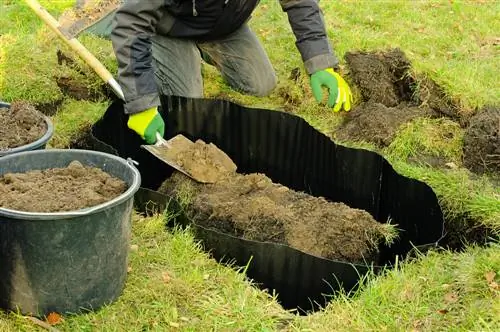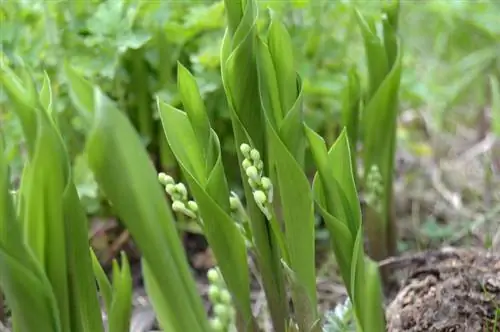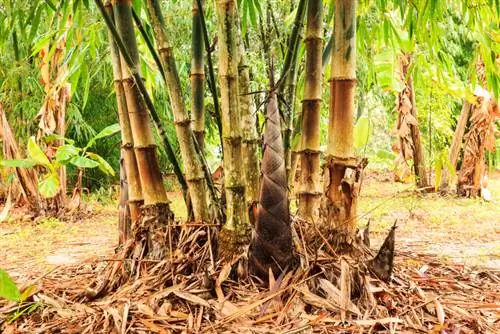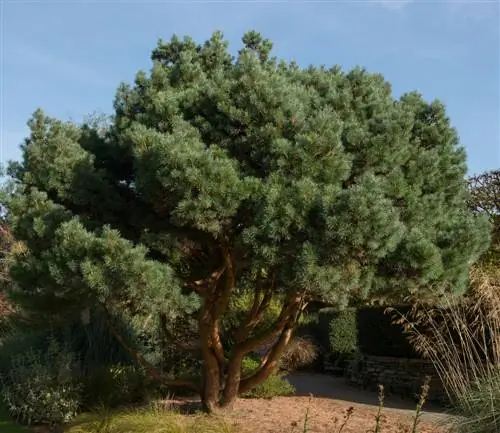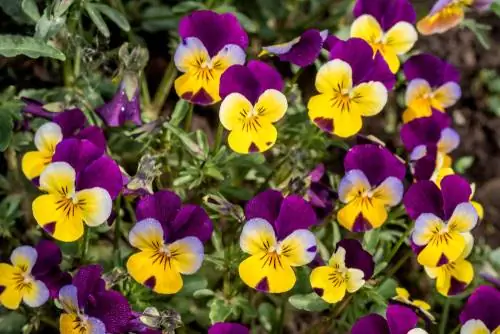- Author admin [email protected].
- Public 2023-12-16 16:46.
- Last modified 2025-01-23 11:21.
In Asia, bamboo is not only used for culinary purposes, but in many cases is also used as a building material. In this country, however, many gardeners appreciate the visual appeal of different types of bamboo and their special growth properties.

What should you consider when planting bamboo in the garden?
Bamboo in the garden provides an evergreen privacy hedge, is available in a variety of growth forms and heights and may require a rhizome barrier. The ideal choice of location and sufficient watering in winter are essential for he althy growth.
Bamboo as an evergreen privacy screen
In many cases, a garden in the middle of a dense development only becomes a relaxing natural idyll when a visual separation from the neighboring gardens is guaranteed. If you want to create a living privacy screen for an undisturbed relaxation atmosphere, bamboo can definitely be used as an evergreen plant. In addition, the privacy protection function of bamboo can of course also be particularly decorative around swimming ponds or next to a sun terrace. However, hobby gardeners should think carefully about what they are doing before planting bamboo. After all, not all bamboo is the same and the different varieties differ in many ways:
- in relation to their frost tolerance
- at growth rate and maximum height
- in optics
- in the formation of runners or clump-shaped growth
Only with the best possible information research and planning can mistakes be avoided that could otherwise literally overwhelm a gardener with bamboo years later.
Keep the necessary distance from your neighbors
If bamboo is planted as a natural privacy hedge, then a larger minimum distance from the property line should definitely be maintained. Usually, the maximum height and distance from the property line at which hedges can be is regulated at the municipal level or by the legislation of a federal state. Once a strong-growing bamboo variety has been able to develop in one location for several years, height growth can sometimes occur very quickly. Then, due to the special way bamboo grows, individual shoots shoot up to several meters in height within a few days. While some varieties only grow like clumps on their own, there are also species of bamboo for which a rhizome barrier is absolutely necessary.
Set firm limits on bamboo
The rhizome of bamboo refers to the underground part of the plant, which is more than just a root system for absorbing water and nutrients. Powers can lie dormant in the bamboo rhizomes, from which long bamboo shoots develop within a very short time. For some types of bamboo, such as the giant bamboo, you should definitely have a rhizome barrier in the soil, while this is not necessary for red bamboo. The bamboo species that form runners can be a nuisance in a garden with suitable location conditions, so this topic should not be taken lightly. For an effective rhizome barrier (€169.00 at Amazon), special foil tapes or metal sheets must completely enclose the bamboo rhizome like a ring to a depth of at least 60 cm. Even above the earth's surface, this ring should still protrude about 5 to 10 cm above the earth so that no runners can form.
Be careful of drying out
Many species of bamboo are easily winter hardy even in Central European locations. However, it can happen that the bamboo is damaged over the winter and then only grows out of the rhizome with great difficulty over the course of the year. In many cases this is not due to cold winter temperatures, but rather to drying out due to persistent frosts. Therefore, planted bamboo should be watered slightly in winter on frost-free days.
Tip
Many people dream of having giant bamboo in their own garden, even though it doesn't grow quite as quickly in Germany as in its areas of origin. However, since it can still reach heights of around 15 to 20 m after many years, the choice of location should always be carefully considered.


